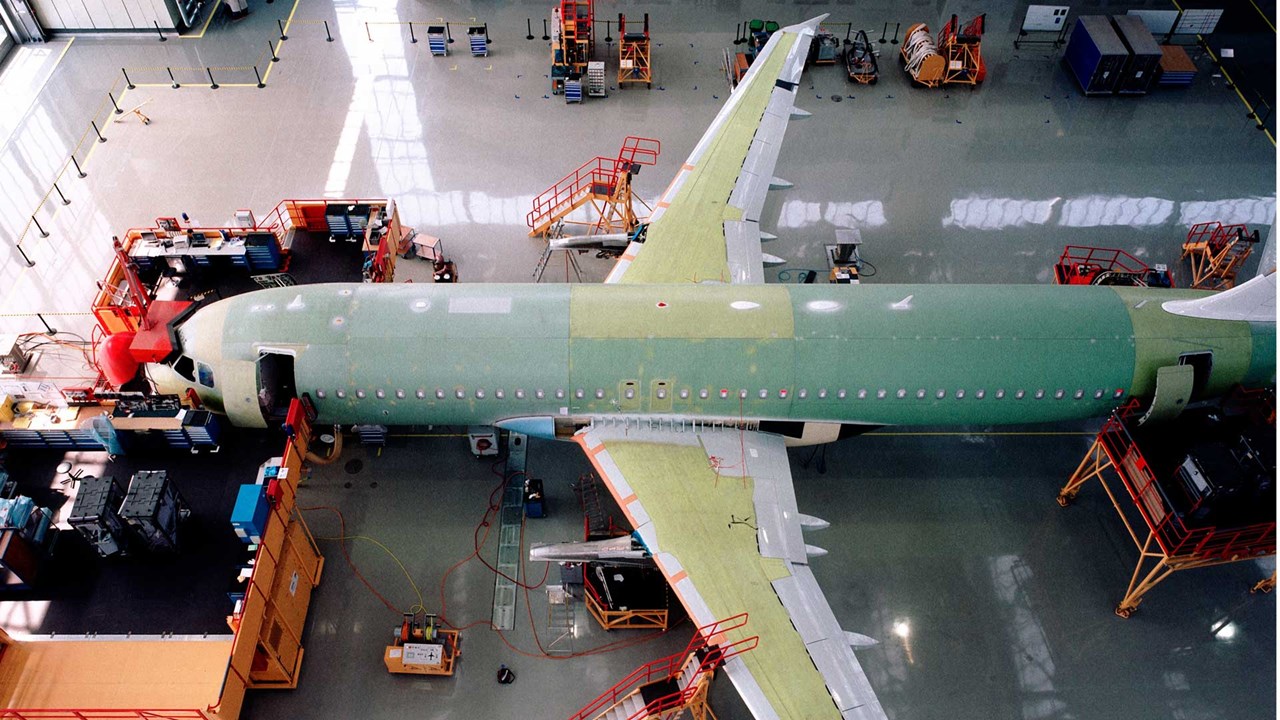Airlines are now spending more money on aircraft maintenance than on fuel and crew expenses. First-movers are already experimenting with new technologies to bring down maintenance costs and many of them are looking towards four specific MRO trends for inspiration.
Industry 4.0 is making its way to the aviation industry, and multiple airlines and MROs are already testing high-tech solutions, in order to improve their operations and stay competitive. In fact, the commercial aviation sector is leading the way when it comes to certain disruptive technologies, such as additive manufacturing and this trend is set to continue.
Four MRO trends that are here to stay
In a time of rapid technological advances, remaining static is not an option, but diving head-first into the latest trend, the moment it hits the market, isn’t the correct move either. As history shows, not all innovations are able to withstand the test of time.
So where should you allocate your resources if you want to make the most of your efforts?
We asked industry expert (retired) Mark Martin, Director of the Commercial Aviation Product Line in the Aviation & Defense Business Unit at IFS, to point to some of the major MRO trends that IFS believes will have the biggest impact on the MRO business and aviation industry as a whole in the years to come.
His forecast is based on research, studies and interviews that IFS has done with a variety of subject matter experts and IFS account directors.
1. Digital twins – a new maintenance standard
In a time where maintenance costs are exceeding fuel costs, some airlines are looking toward digital technology to continuously monitor vital physical assets, such as engines, in real-time, allowing them to plan maintenance much more effectively.
» A digital twin refers to a virtual replica of a physical asset, like an aircraft engine, which can display how the engine is running to engineers on the ground while the aircraft is still in the air. These can then be linked to IT systems to help streamline and optimize maintenance processes and operational availability,« explains Mark Martin.
Implementing this method requires forward thinking, as engineers, for instance, must equip an engine with thousands of data points in the early design and manufacturing phases.
These data points are then used to create the digital model that tracks and monitors the engine in real-time, providing engineers on the ground essential information such as engine temperature, pressure, and airflow rate.
»By implementing digital twins and creating a virtual model of the asset, organizations can receive early warnings, predictions and even a plan of action by simulating "what-if" scenarios based on weather, performance, operations and other variables, helping keep aircraft in service for longer,« says Mark Martin.
Reducing AOGs with digital twins
Utilizing the Digital Twin technology, an airline will have a much better chance of predicting and avoiding potential AOGs, as its able to continuously monitor critical aircraft assets and have a maintenance plan ready before the aircraft has even landed.
»Armed with this sort of data, engineers and MROs can compare data gathered by sensors on the asset to that of its digital twin, which can be put through the same paces the engine experiences as it takes off. If the two data sets don’t match up, then a request can be put in for the engine to enter servicing,« explains Mark Martin.
One common cause of delays is problems with the landing gear, as these are typically not detected until after pushback from the gate. GE recently helped create the world’s first digital twin for an aircraft’s landing gear as a solution to this problem.
By adding sensors to the landing gear and analysing this data, it’s possible to minimize downtime by predicting early malfunctions as well as diagnosing the remaining life-cycle of the landing gear.
Even though the technology is still maturing, there is already a lot to gain by utilizing Digital Twins in aircraft maintenance. According to the International Data Corporation (IDC), companies that invest in Digital Twin technology can expect to see a 30 percent improvement in cycle times of critical processes, including maintenance.

2. Artificial intelligence is taking flight
If you have already looked into investing in artificial intelligence (AI), you’re not alone. According to a SITA report, 50 percent of airlines are planning on investing in AI and cognitive computing the next couple of years.
Broadly speaking, artificial intelligence refers to an area of computer science that emphasises the development of intelligent machines that work and react like humans. It’s considered one of the cornerstones in Industry 4.0, along with other technologies such as the internet of things, big data, and augmented reality.
But how far has the technology really come? And what are the use cases of AI in the aviation industry? We took a closer look at this exciting MRO trend.
According to industry expert Mark Martin, the biggest opportunity for AI in the aviation industry is predictive maintenance. He refers to a report from consultancy agency Oliver Wyman, which suggested that “predictive analytics can help optimize maintenance planning and capacity by reducing the need for routine maintenance and only triggering repairs when needed – increasing fleet availability by up to 35 percent and reducing labour costs by 10 percent.”
AI can facilitate this process by using data from aircrafts in service to predict potential errors.
»The ability to correctly predict the right moment to repair or replace a part is key to this approach – if done too far in advance, the benefits of longer usage are lost, but if done too late, unexpected failures can result in unavailable assets and lost revenue,« says Mark Martin.
From good-to-have to business-critical
Large quantities of data play a key role in Industry 4.0 and AI. However, a lot of the current IT-systems are not equipped to handle such large amounts of data. That’s why airlines looking to utilize AI must also invest in next generation cloud solutions that are able to process and store the vast quantities of data, before they can reap the benefits of the technology.
According to Mark Martin, the days of physically storing and processing data on-site are vanishing, making way for cloud solutions and mobile devices that can access the data anywhere and anytime.
»As digitization transforms business models, the application of advanced analytical methods from AI will no longer just be good to have – it will soon be business critical,« states Mark Martin.
3. Mobility and cloud
Just like cloud services are making their way into the control room of airlines, so are mobile solutions. According to research from IFS, aviation professionals identify mobile computing as one of the five key areas of investment in the years to come.
Software as a service (SaaS) is closely connected to cloud- and mobile solutions. It’s a software distribution model that enables users to run applications over the internet, removing the need of running applications on their own computers and servers.
This eliminates the expenses of hardware acquisition and maintenance, as well as licensing, installation and support of the software. Airlines and MROs have previously raised concerns about the large amount of physical hardware they would need to adopt new technologies, for this reason, SaaS is proving to be attractive to many operations looking to reap the benefits of AI and other data-heavy technologies.
»Cloud-based mobile solutions can be rolled out to the workforce with no physical installation required. Consequently, airlines can focus on the value they receive, not the infrastructure they need, removing a barrier to change,« says Mark Martin.

4. Using drones to cut maintenance times
Drones are set to revolutionize aircraft inspections in the years to come by offering faster inspection times as well as improved accuracy of checks.
»Today, typical visual inspections of commercial aircraft can take up to six hours. Drones have the potential to cut down on this time dramatically while offering greater accuracy — freeing up engineer time, reducing maintenance costs and improving safety,« says Mark Martin, Director of IFS Commercial Aviation Product Line.
Some airlines have already started taking advantage of the benefits that drones offer, including low-cost carrier easyJet who has been experimenting with drones for known and unknown fuselage inspections.
However, as drones are becoming smarter, new use cases arise. With the current advances in the technology, it will soon be possible to automate inspections – not replacing the engineer, but rather easing their workload.
»The next generation of drones will still require a human controller, but visual processing algorithms combined with IT systems will enable the drone to send work orders straight to the maintenance crew as soon as a fault has been identified,« explains Mark Martin.
Challenges with regulation
One of the biggest overall hurdles with drones is the lack of a common set of rules that ensures their safe usage. In the USA, drones must receive FAA approval for both indoor and outdoor flights, somewhat restricting the potential and wide adoption of using drones for aircraft inspections.
Furthermore, the regulation and operational complications change from region to region and country to country, which must also be considered to make sure that drones are used safely.
However, according to Mark Martin, the benefits of using drones for maintenance tasks are starting to outweigh the challenges, as authorities are making improvements in regards to the regulatory framework.
»In the U.S., for example, a new initiative – the UAS Integration Pilot Program – was announced in 2017. Its aim was to pair unmanned aircraft operators with state and local governments to safely expand cutting-edge unmanned aircraft operations. The program shaped a regulatory framework that balances the benefits of UAS technology while lessening the risks to public safety and security,« he ends.
The FAA concluded the IPP on October 25, 2020 as mandated by statute, and decided to continue the partnerships and progress it made under the IPP to continue to address remaining challenges. To continue work on the remaining challenges of UAS integration, the FAA launched a new program called BEYOND on October 26, 2020.